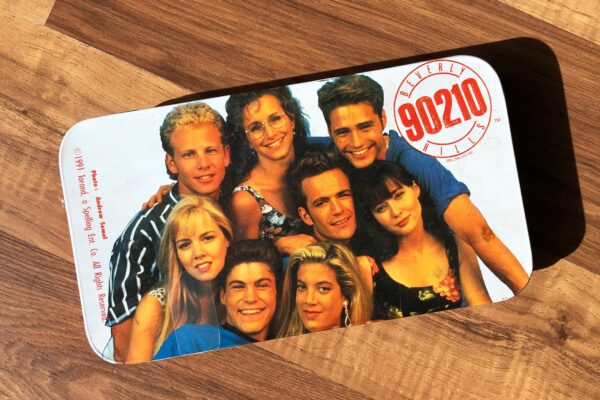Leveraging Behavioral Economics to boost performance and improve user experience.
This is second in our series co-authored by me and Zach Gay exploring how understanding Behavioral Economics can- and should- inform your marketing strategies.
The Endowment Effect is the theory that people place more value on objects merely because they own them.
My most prized possession isn’t an heirloom or a diamond or a vehicle. It’s a 30- year-old metal pencil case with the cast of the TV show Beverly Hills, 90210 on it that cost less than $1.99.
I got it one Christmas many years ago in a game of “Yankee Swap” with my family. My cousin Stephanie and I nearly came to blows trying to win that thing, but in one of my rare Christmas Eve victories, that baby went home with me that night.
It’s probably been ten years since I came into possession of this dumb metal box. I use it to hold jewelry and small items when I’m traveling. And for ten years, my cousin has upped the ante, trying to buy or bribe it away from me. Even random people on Facebook have asked if I would bequeath it to them in my will. A 90210 pencil box. That cost less than two dollars.
Had I not ‘won’ that box, I probably would have forgotten all about it- and its inherent value to me would be nothing. But because it’s mine, I wouldn’t part with it for any dollar amount… almost.
That’s the idea behind the Endowment Effect- that people highly value those possessions over which we feel ownership. Now… what does that mean for marketing strategy?
- If you can create a sense of ownership through their experience with your brand and website, you may be able to increase the performance and conversion rate significantly.
- If you offer products that can be customized or personalized, let website users play around with the options until they create the product that reflects their needs or personality.
- Offer free samples or low-cost introductory offers. Once your users have an item in-hand, they’re more likely to value your product and continue buying from you.
- You can even use haptic language and imagery to create a digital sense of ownership. Write in the second person when describing products, as in “use your 90210 pencil box to hold your treasures while traveling,” or “protect what you love using your limited-edition 90210 pencil box.” Show customers inside your brick-and-mortar stores or at home owning and using your product.
People don’t want to part with something once it’s in their possession once they’ve fostered a feeling of ownership and attachment. It’s a really primitive urge to hang onto what you have in your hands that we can create digitally through thoughtfully architected experiences.
Now that you know the WHY, it’s time to learn the HOW. Jump over to this article by Zach Gay, Senior Technical Consultant, where he will teach you how exactly to implement some of these strategies on your next Sitecore project.

